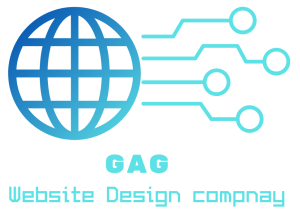In today’s digital age, Website Design for Law Firms a well-designed website is essential for law firms looking to establish trust and credibility with their clients online. As potential clients increasingly turn to the internet to find legal services, a professional and user-friendly website can make a significant difference in attracting and retaining clientele. In this article, we will explore the fundamental principles of website design tailored specifically for law firms. From branding and accessibility to content and security, we’ll delve into key strategies that will help your firm build trust and connect with clients effectively in the online realm.
Understanding the Importance of Website Design for Law Firms

In the digital age, a law firm’s website serves as its virtual storefront, often acting as the first point of contact for potential clients. Understanding the importance of website design is crucial for law firms aiming to make a lasting impression and build trust with their online audience.
Establishing Credibility:
- A well-designed website instills confidence in potential clients, showcasing professionalism and competence.
- Clean and visually appealing design elements help convey trustworthiness and reliability.
- Testimonials, case studies, and client reviews can further reinforce credibility and showcase past successes.
Enhancing Visibility:
- An optimized website improves search engine rankings, making it easier for potential clients to find your firm online.
- Incorporating relevant keywords, meta tags, and localized content can boost visibility in local search results, particularly important for law firms serving specific geographic areas.
Differentiation from Competitors:
- A unique and memorable website design sets your firm apart from competitors in a crowded legal landscape.
- Customized branding elements, such as logos, color schemes, and typography, help reinforce your firm’s identity and distinguish it from others.
24/7 Accessibility:
- Unlike traditional brick-and-mortar offices with limited operating hours, a website provides clients with round-the-clock access to information and services.
- Online contact forms, live chat support, and downloadable resources offer convenient avenues for clients to reach out and engage with your firm at their convenience.
Building Relationships:
- A well-designed website facilitates meaningful connections with potential clients, serving as a platform to share valuable insights and resources.
- Informative blog posts, legal articles, and FAQs demonstrate expertise and provide helpful information, fostering trust and positioning your firm as a reliable resource.
Adapting to Changing Consumer Behavior:
- With more consumers turning to the internet for legal services, a professionally designed website reflects an understanding of evolving consumer preferences and behaviors.
- Mobile responsiveness and intuitive navigation ensure a seamless user experience across devices, catering to the growing number of users accessing the internet via smartphones and tablets.
Crafting a Professional and Trustworthy Online Presence
Creating a professional and trustworthy online presence is essential for law firms seeking to establish credibility and connect with clients in the digital realm. This section will delve into key strategies and considerations for crafting a website that reflects professionalism, instills trust, and effectively communicates your firm’s expertise and values.
Clear Branding and Identity:
- Define your firm’s brand identity, including its mission, values, and unique selling propositions.
- Develop a cohesive visual identity, incorporating elements such as logos, color schemes, and typography that resonate with your firm’s identity and target audience.
- Consistently apply branding across all website elements to reinforce your firm’s identity and enhance brand recognition.
Professional Design Elements:
- Opt for a clean and modern design layout that reflects professionalism and sophistication.
- Use high-quality images and graphics to visually enhance the website and create a polished appearance.
- Ensure that design elements are consistent throughout the website, including layout, navigation menus, and interactive features.
Engaging and Informative Content:
- Provide clear and concise information about your firm’s services, practice areas, and legal expertise.
- Craft compelling and informative content that addresses the needs and concerns of your target audience.
- Showcase your firm’s achievements, accolades, and notable case results to demonstrate credibility and expertise.
User-Friendly Navigation:
- Implement intuitive navigation menus and site structure to facilitate easy navigation and accessibility.
- Organize content into logical categories and subcategories, making it easy for visitors to find the information they need.
- Include prominent calls-to-action (CTAs) that prompt visitors to contact your firm or schedule a consultation.
Trust Signals and Social Proof:
- Incorporate trust signals such as client testimonials, reviews, and endorsements to build credibility and trust.
- Display professional affiliations, memberships, and certifications to reinforce your firm’s credibility and expertise.
- Highlight client success stories and case studies to showcase your firm’s track record of achieving favorable outcomes for clients.
Transparent Communication:
- Clearly communicate your firm’s contact information, including phone numbers, email addresses, and office locations.
- Provide multiple channels for communication, such as contact forms, live chat support, and social media profiles.
- Set clear expectations regarding response times and availability to ensure prompt and transparent communication with clients.
Key Elements of Effective Website Design for Law Firms
Creating a successful website for a law firm requires attention to various key elements that contribute to its effectiveness in engaging visitors and converting them into clients. By incorporating these essential components into the design process, law firms can enhance their online presence and improve user experience.
Clear and Intuitive Navigation:
- A well-structured navigation menu ensures that visitors can easily find the information they need.
- Categories such as practice areas, attorney profiles, testimonials, and contact details should be prominently featured and logically organized.
- Implementing breadcrumb navigation and search functionality further aids navigation, allowing users to quickly locate specific content.
Professional Branding and Identity:
- Consistent branding across the website helps reinforce the firm’s identity and professionalism.
- Incorporate the firm’s logo, color scheme, and typography consistently throughout the site to create a cohesive visual identity.
- Use high-quality imagery and graphics that align with the firm’s brand values and resonate with the target audience.
Compelling Content and Messaging:
- Engaging and informative content is essential for capturing visitors’ attention and demonstrating expertise.
- Clearly communicate the firm’s unique value proposition, highlighting key differentiators and areas of specialization.
- Use persuasive language and compelling storytelling to convey the firm’s strengths and build trust with potential clients.
Responsive Design for Mobile Accessibility:
- With an increasing number of users accessing websites on mobile devices, responsive design is critical for ensuring a seamless experience across all screen sizes.
- Optimize the website’s layout and functionality to accommodate different devices and resolutions, prioritizing ease of use and readability on smaller screens.
- Test the website across various devices and browsers to ensure consistent performance and accessibility.
Attention to Accessibility and Compliance:
- Ensure that the website complies with accessibility standards such as the Web Content Accessibility Guidelines (WCAG), making it usable for individuals with disabilities.
- Provide alternative text for images, use descriptive headings, and implement keyboard navigation to improve accessibility for all users.
- Regularly audit the website for compliance with legal and regulatory requirements, including privacy policies and data protection regulations.
Optimized Load Speed and Performance:
- Fast load times are essential for retaining visitors and minimizing bounce rates.
- Optimize images, minimize HTTP requests, and leverage caching techniques to improve website performance.
- Monitor and optimize server response times and page load speeds regularly to ensure optimal performance.
Incorporating Legal Branding and Identity into Web Design

Establishing a strong brand identity is crucial for law firms to differentiate themselves in a competitive market and build trust with clients. When designing a website for a law firm, it’s essential to incorporate elements of legal branding effectively to convey professionalism, expertise, and credibility.
Define Brand Values and Messaging:
- Begin by clearly defining the firm’s brand values, mission, and unique selling points.
- Craft messaging that reflects the firm’s commitment to client service, legal expertise, and ethical principles.
- Ensure that the website’s content, tone, and imagery align with the firm’s brand identity and resonate with the target audience.
Develop a Distinctive Visual Identity:
- Design a logo that embodies the firm’s values and communicates professionalism and trustworthiness.
- Select a color palette that reflects the firm’s personality and resonates with its target audience.
- Choose typography that is legible and conveys the desired tone, whether it’s authoritative, approachable, or sophisticated.
Consistent Branding Across Platforms:
- Maintain consistency in branding elements across all online and offline touchpoints, including the website, social media profiles, and marketing materials.
- Use the firm’s logo, color scheme, and typography consistently to reinforce brand recognition and build trust with clients.
- Ensure that branding elements are scalable and adaptable to different mediums and screen sizes for a cohesive brand experience.
Showcase Legal Expertise and Experience:
- Highlight the firm’s areas of expertise, practice areas, and industry accolades prominently on the website.
- Feature attorney profiles that emphasize their qualifications, experience, and professional achievements.
- Showcase case studies, client testimonials, and success stories to demonstrate the firm’s track record of delivering favorable outcomes for clients.
Incorporate Legal Symbols and Icons:
- Integrate legal symbols and icons subtly into the website design to reinforce the firm’s legal expertise.
- Use icons representing legal concepts such as scales of justice, gavels, law books, or courthouse buildings sparingly and tastefully.
- Ensure that legal symbols enhance the overall design aesthetic and contribute to the user experience without overwhelming or distracting visitors.
Reflect Ethical Standards and Values:
- Communicate the firm’s commitment to ethical practices and professional standards throughout the website.
- Include information about the firm’s code of conduct, adherence to legal regulations, and commitment to client confidentiality.
- Emphasize the firm’s dedication to integrity, honesty, and transparency in all client interactions and legal proceedings.
Ensuring Accessibility and User-Friendliness for Clients
Accessibility and user-friendliness are paramount considerations when designing a website for a law firm. Ensuring that the website is accessible to all users, including those with disabilities, and providing a seamless user experience are essential for fostering trust and engagement with clients.
Compliance with Accessibility Standards:
- Adhere to accessibility guidelines such as the Web Content Accessibility Guidelines (WCAG) to ensure that the website is usable by individuals with disabilities.
- Provide alternative text for images, captions for videos, and transcripts for audio content to accommodate users with visual or hearing impairments.
- Implement keyboard navigation and ensure that all interactive elements are accessible via keyboard commands for users who cannot use a mouse.
Clear and Intuitive Navigation:
- Design a navigation menu that is easy to understand and navigate, with clear labels and logical organization.
- Use descriptive headings and subheadings to structure content and facilitate navigation for users using screen readers or other assistive technologies.
- Include a search function that allows users to quickly find specific information or resources on the website.
Responsive Design for Multiple Devices:
- Optimize the website for responsiveness across various devices and screen sizes, including desktops, laptops, tablets, and smartphones.
- Ensure that the layout, content, and functionality adapt seamlessly to different screen resolutions and orientations to provide a consistent user experience.
- Test the website on different devices and browsers to identify and address any compatibility issues or usability concerns.
Readability and Clarity of Content:
- Use clear and concise language to communicate information effectively and avoid jargon or legalese that may be confusing to users.
- Break up content into digestible chunks with short paragraphs, bullet points, and headings to improve readability and comprehension.
- Use high-contrast color schemes and legible fonts to enhance readability, particularly for users with visual impairments or reading difficulties.
Minimizing Load Times and Performance Optimization:
- Optimize the website’s performance to ensure fast load times and smooth navigation, minimizing user frustration and bounce rates.
- Compress images, minify CSS and JavaScript files, and leverage browser caching to reduce page load times and improve overall performance.
- Monitor website performance regularly and address any issues or bottlenecks that may affect user experience or accessibility.
Accessibility Statement and Feedback Mechanism:
- Include an accessibility statement on the website that outlines the firm’s commitment to accessibility and provides contact information for users to report accessibility issues.
- Implement a feedback mechanism or contact form that allows users to provide input or report accessibility barriers they encounter while using the website.
- Act promptly to address any reported accessibility issues and make necessary improvements to ensure an inclusive and accessible user experience for all visitors.
Building Credibility through Content and Visuals

Building credibility is essential for law firms seeking to establish trust and confidence with their online audience. Effective use of content and visuals on the website can play a significant role in enhancing credibility and portraying the firm as a reliable and authoritative source of legal expertise.
High-Quality Content Creation:
- Develop informative and valuable content that addresses common legal questions, concerns, and issues relevant to the firm’s practice areas.
- Publish articles, blog posts, case studies, and legal guides that demonstrate the firm’s knowledge, expertise, and thought leadership in the legal field.
- Ensure that content is accurate, well-researched, and up-to-date, providing reliable information that clients can trust and rely on.
Showcasing Legal Expertise:
- Highlight the firm’s legal expertise and experience through attorney profiles, practice area descriptions, and notable case summaries.
- Provide detailed biographies of attorneys, including their education, professional background, areas of specialization, and any accolades or awards they have received.
- Showcase successful case outcomes, client testimonials, and endorsements from reputable organizations to validate the firm’s track record and credibility.
Visual Representation of Professionalism:
- Use high-quality images, videos, and graphics to enhance the visual appeal of the website and convey professionalism.
- Incorporate professional photography of attorneys, staff members, and the firm’s office environment to humanize the brand and build rapport with visitors.
- Utilize visually engaging infographics, diagrams, and charts to illustrate complex legal concepts or processes in a clear and accessible manner.
Consistent Brand Messaging:
- Ensure that the firm’s brand messaging is consistent across all content and visual elements on the website.
- Use language that reflects the firm’s values, mission, and commitment to client service, reinforcing the brand’s identity and positioning.
- Align visual elements such as color schemes, typography, and design aesthetics with the firm’s brand guidelines to maintain a cohesive and unified brand image.
Transparency and Authenticity:
- Foster transparency and authenticity in all communications with clients, reflecting honesty, integrity, and professionalism.
- Disclose relevant information about the firm’s history, team members, legal fees, and client expectations to build trust and manage expectations effectively.
- Avoid exaggeration or misleading claims in marketing materials and content, prioritizing honesty and accuracy in all communications.
Engaging User Interactions:
- Encourage user interactions and engagement through interactive features such as contact forms, live chat support, and comment sections.
- Promptly respond to inquiries, comments, and feedback from website visitors, demonstrating responsiveness and a commitment to client communication.
- Create opportunities for visitors to connect with the firm on social media platforms and subscribe to newsletters or updates to stay informed about legal developments and firm news.
Website Design for Law Firms Conclusion
In conclusion, effective website design plays a pivotal role in shaping the online presence of law firms, influencing client perceptions, and fostering trust and credibility.
By understanding the importance of clear navigation, professional branding, engaging content, accessibility, and user-friendliness, law firms can create a compelling online experience that resonates with clients and sets them apart from competitors.
Incorporating elements of legal branding, showcasing expertise, and prioritizing accessibility demonstrate a firm’s commitment to client service and inclusivity, ultimately leading to stronger client relationships and business growth.
As technology continues to evolve and consumer expectations shift, ongoing optimization and adaptation are essential to maintaining a competitive edge in the digital landscape.
By embracing best practices in website design and staying attuned to the needs of their audience, law firms can effectively leverage their online presence to build trust and drive success in today’s dynamic legal industry.
Frequently Asked Questions (FAQs) about Website Design for Law Firms :
Q: Why is website design important for law firms?
A: Website design is crucial for law firms as it serves as their virtual storefront, often being the first point of contact for potential clients. A well-designed website conveys professionalism, credibility, and trustworthiness, helping law firms attract and retain clients in the competitive legal market.
Q: What are the key elements of effective website design for law firms?
A: Some key elements include clear and intuitive navigation, professional branding and identity, compelling content and messaging, responsive design for mobile accessibility, attention to accessibility and compliance, and optimized load speed and performance.
Q: How can law firms incorporate legal branding into their website design?
A: Law firms can incorporate legal branding by defining their brand values and messaging, developing a distinctive visual identity with logos, colors, and typography, maintaining consistency across platforms, showcasing legal expertise and experience, incorporating legal symbols and icons, and reflecting ethical standards and values.
Q: Why is accessibility important in website design for law firms ?
A: Accessibility ensures that all users, including those with disabilities, can access and navigate the website effectively. By adhering to accessibility standards and providing a seamless user experience for everyone, law firms demonstrate inclusivity, enhance user satisfaction, and comply with legal requirements.
Q: How can law firms optimize their website for user-friendliness?
A: Law firms can optimize their website for user-friendliness by prioritizing clear and intuitive navigation, readability and clarity of content, responsive design for multiple devices, minimizing load times and optimizing performance, and providing an accessibility statement and feedback mechanism for users to report issues.
Q: What are some best practices for maintaining an effective Website Design for Law Firms ?
A: Some best practices include regularly updating content to reflect current information and trends, monitoring website performance and addressing any issues promptly, staying informed about changes in technology and user behavior, and soliciting feedback from clients to continually improve the website’s effectiveness.



